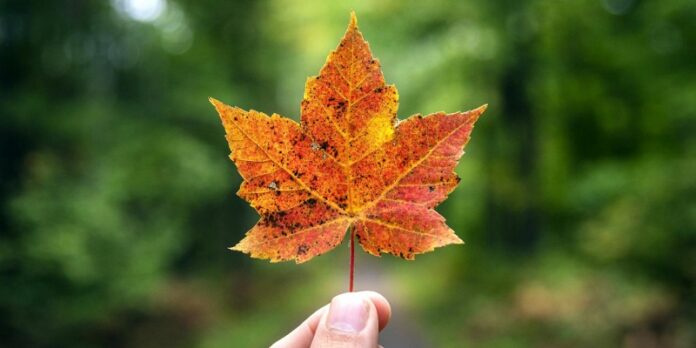Stuff a scarecrow
This is a fun project for kids and adults, alike. There’s no need to buy straw. Fallen leaves make great scarecrow stuffing. Here’s how to make one:
- Gather your materials: old pair of pants, old long-sleeved shirt, safety pins or needle and thread, string, an old pillowcase and a whole lot of leaves.
- Button and zip up the pants. Stuff the pants full of leaves until the pants can practically stand on their own.
- Do the same with the long-sleeved shirt. Secure the bottom of the shirt to the top of the pants with sewing thread or safety pins.
- Stuff the pillowcase half-full of leaves. Tie off the bottom with the string. This is the scarecrow’s head. Stuff the tied end of the pillowcase into the neck of the shirt. Secure it in place with sewing thread or safety pins.
- Decorate your scarecrow. There are many ways to decorate your new leafy scarecrow. Make a face on the scarecrow’s head with paint or permanent markers. Add a wig or hat on top of its head. Add gloves to the sleeve ends for hands or old shoes to the pant leg ends for feet. There are so many creative options!
Start an herbarium
My grandmother used to take us grandkids on walks in nearby forests and fields where we would collect flowers and leaves to press and preserve. For pressing and drying, we used old books with a weight (usually a field stone) on top. More than 30 years later, these dried flowers look the same as the summer we pressed them. Delicate little memories.
We didn’t know that the book of pressed flowers is an herbarium – a collection of preserved plant specimens. Or that making one is a popular hobby. It is a fun and important way to learn about the plant life around you. Professional, well-preserved collections help keep a record of plant varieties and environmental conditions over time.
Pressing isn’t just for flowers. You can also press and preserve fall leaves. The pressed and dried leaves can them be used for arts and crafts like wall hangings and bookmarks. They can also be kept for posterity and memories like the flowers from the walks with my grandmother.
Collecting a reasonable amount of leaf specimens – so long as they are not endangered species or in a designated wilderness area – is generally allowed on national forests and grasslands. If in doubt, contact the local national forest office.
Tuck in your garden
Leaves are the forest’s mulch. Leaf litter forms a natural blanket that moderates temperature extremes in the soil, protecting trees’ roots. It also soaks up and slowly releases water and limits soil erosion. This is even true in urban forests. Fallen leaves degrade over time into fantastic compost, returning valuable minerals to the soil. Leaf litter can do this for your vegetable and flower beds, too. In yards and parks, leaf litter mulch can also suppress weeds and form a nice boundary for beds.
Leaf litter is the winter home of many beneficial insects. They use leaves and hollow plant stems to protect them from the winter elements until it is safe for them to reemerge in the spring. That is why many organizations, such as the Xerces Society, encourage us to leave the leaves until late spring.
Compost piles and leaf mulching are both ways to help create havens for pollinators in your yard or park.
Cook up some compost
Easy backyard composting (from the USDA Composting page):
- Choose a location. A good site is dry and in either the sun or partial shade.
- Set-up your compost bin. Purchase a compost bin or create an inexpensive bin with wire mesh and 3-4 poles for support.
- Build your compost pile. Include 2-3 parts “brown material” (fall leaves, twigs, shredded newspaper, straw, wood chips, and shredded wood) and 1 part “green material” (vegetable and fruit scraps, coffee grounds, crushed eggshells, garden and grass clippings, tea bags without staples) by volume then add water to keep moist.
- Don’t forget to turn your pile! A monthly rotation is a good rule of thumb.
Even simpler yet, you can leave leaves where they land to collect and decompose into the soil naturally. Just like they do in the forest.
Become a citizen scientist
Another way to learn about plants and the fall color change is to become a citizen scientist in the North American Phenology Campaign. The campaign is a citizen-scientist effort to monitor and report plant color changes in the fall and spring to gather information on the plant growing season. You can pitch in by observing and reporting plant color changes – called green-down and green-up – in your area.
The citizen-scientist project is set up for anyone to participate, from individuals to schools. The site offers videos and written instructions on how to use plant color guides to track leaves from the beginning to the end of the fall color change. It also explains how to record and report the information you find.
The information you gather helps scientists learn about how trees are reacting and adapting to their environment. It also helps better predict fall colors and other changes in coming years.
Build a pile and jump in!
Although left piles are great in yards and community parks, it’s generally a bad idea to jump into leaf piles in the forest. There could be anything under those leaves, such as a sharp branch, hidden hole or grumpy creature.
Only jump into leaf piles you’ve made yourself. Then you can be sure the leaf pile is free of stones, sticks and other hard pointy things. Take it slow at first. The ground is closer – and harder – than you think.
Whenever and wherever you enjoy playing in leaves, remember to do a thorough tick check shortly thereafter.
It’s time to go out and enjoy the leaves!








